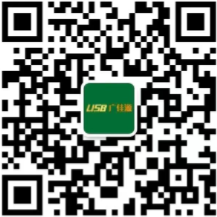 Mr. Chen:136-6225-2835
Mr. Chen:136-6225-2835
 Miss Chen:189-2385-0895
Miss Chen:189-2385-0895
Shenzhen Guangjiayuan Electronic Technology Co., Ltd
Mr. Chen: 136-6225-2835 (same WeChat account)
QQ: 979285705
Miss Chen: 189-2385-0895 (same WeChat account)
QQ: 2391552662
Chen Weiting :135-3824-4786 (same WeChat account)
Chen Weihao: 139-2459-4393 (same WeChat account)
Tel: 86-0755-33182327
Email: gjydz88@163.com
Website: www.usb-type.com
Address: Building 10, Hongxing Gebu Qixiang, Songgang Town, Bao'an District, Shenzhen, Guangdong Province
With the release of Apple's new computer, the familiar HDMI and SD card interfaces have returned once again, while the previous USB C interface remains unchanged. In addition to the field of computer tablets, more and more mobile devices are starting to use USB C ports. It can be said that it has become the top 1 in the data transmission industry. Why can it replace USB type-a and take the lead? Let's analyze further.

To understand Port C, we need to carefully dismantle it step by step based on its development. For so many years, it has been the world of A ports. How was the USB C port born and gradually improved to become the most popular interface at present?


The current electronic devices are completely different from before, thinner and lighter, with a denser internal structure, which requires interfaces to be designed in a smaller direction. So USB has mini USB and micro USB, but for USB, these two are not convenient, especially with the further upgrade of USB, and after the change, they are not related to lightweight, and even less used.

Because USB needs to constantly update and adapt to the environment, mini and micro USB with "small interfaces" are no longer sufficient, so type-C has emerged. Compared to traditional USB type-a, the shape is consistent from 2.0 to 3.0. Moreover, type-c does not have the need to be compatible with the old interface, and it was already USB 3.1 as soon as it appeared.


When it comes to the transmission speed (in Gbps) corresponding to different USB standards, we can directly start with USB 3.1: * 1. The ideal bandwidth is 10Gbps (Gen 2), which improves the transmission speed* 2. The coding standard has been upgraded from 8b/10b to 128b/132b, greatly reducing the coding loss rate* 3. USB AV bandwidth increases to match HDMI1.4* 4. The power output can reach 100W. The voltage can be 12V and 20V, and the maximum current can reach 5A* 5. Support for alternative modes. That is, it can directly support lightning interfaces, HDMI, DisplayPort, etc.






The type-c interface has been around for over 7 years. You can see it on most mainstream devices. As electronic products become smaller in size and have fewer interfaces, manufacturers urgently need a "unified interface" to facilitate market promotion. So the type-c small interface has almost become the best synonym.

In terms of size, it is only 8.3 * 2.5 mm, and can be plugged in both front and back, greatly improving usability. In applications, mobile phones, tablets, computers, televisions, game consoles, video cameras, and even cars can be interconnected through various modes within type-c. So, the rapid development of type-c also witnessed the decline and decline of the type-a interface.


By 2021, type-c has become the only supported interface in the USB 4 standard. This also fully demonstrates that type-c unifies the world sooner or later. More importantly, USB 4 adopts dual channel transmission, while previous connectors such as USB type-a or micro-b only support single channel transmission, which also indicates that type-a will end sooner or later.

The USB 4 transmission rate has been increased to 40 Gbps and can dynamically share bandwidth. It will continue to leverage the advantages of type-c and consolidate its position as an impregnable data transmission interface. But wait, since type-C is so good, why are there so many type-C devices around and so many cables still needed

Although they are all type-C interfaces, you still need to buy a lot of cables to adapt, and this reason needs to be explored from its initial legacy issues. We also need to hire an organization: the USB-IF Association (USB Implementers Forum), which is now the USB Standardization Organization.

In order to further unify other interfaces, this organization had to integrate the advantages of these old interfaces, so USB-IF introduced an alternate mode mode that supports the use of the USB type-c interface for other purposes.

Introduction to each pin of the USB C interface (you can click on the larger picture) Simply put, a type-C interface can not only serve as a power port, but also plug in USB headphones, external keyboards, or monitors. With so many functions, the prerequisite for implementation is: 1. The transmission protocol of the interface and the interface protocol that comes with different devices may vary greatly, which brings about differences in usage. 2. More importantly, the manufacturer will cut the interface functions, such as only supporting low speed or reducing effective pins to reduce interface costs.
Source: Cat Greedy Yuwen
Contact person:
Mr. Chen 136-6225-2835 (same WeChat account)
Miss Chen 189-2385-0895 (same WeChat account)
Chen Weiting 135-3824-4786 (same WeChat account)
Chen Weihao 139-2459-4393 (same WeChat account)
Address:
Building 10, Hongxing Gebu Qixiang, Songgang Town, Bao'an District, Shenzhen, Guangdong Province
 |
 |
| Technology 1 | Technology 2 |